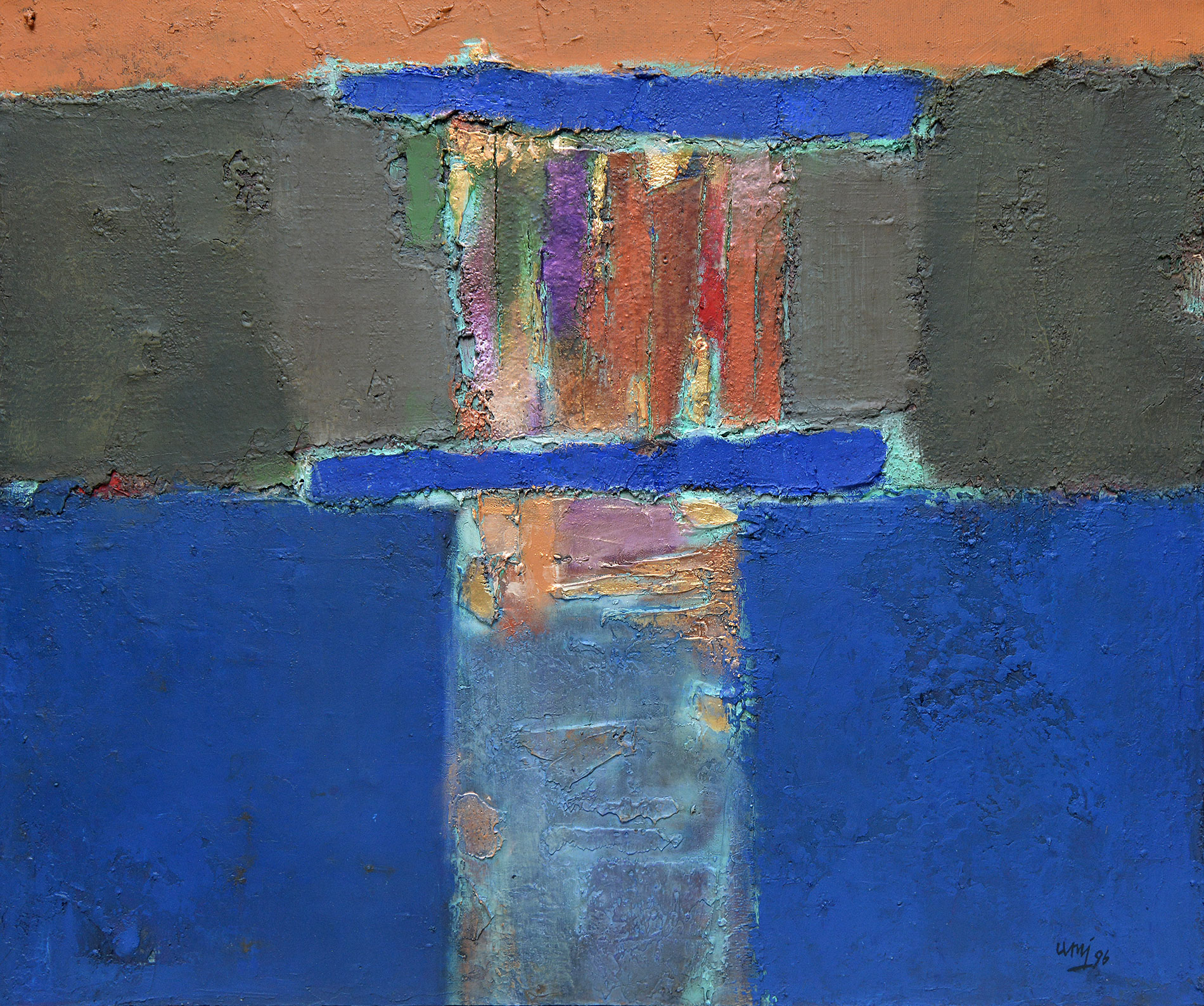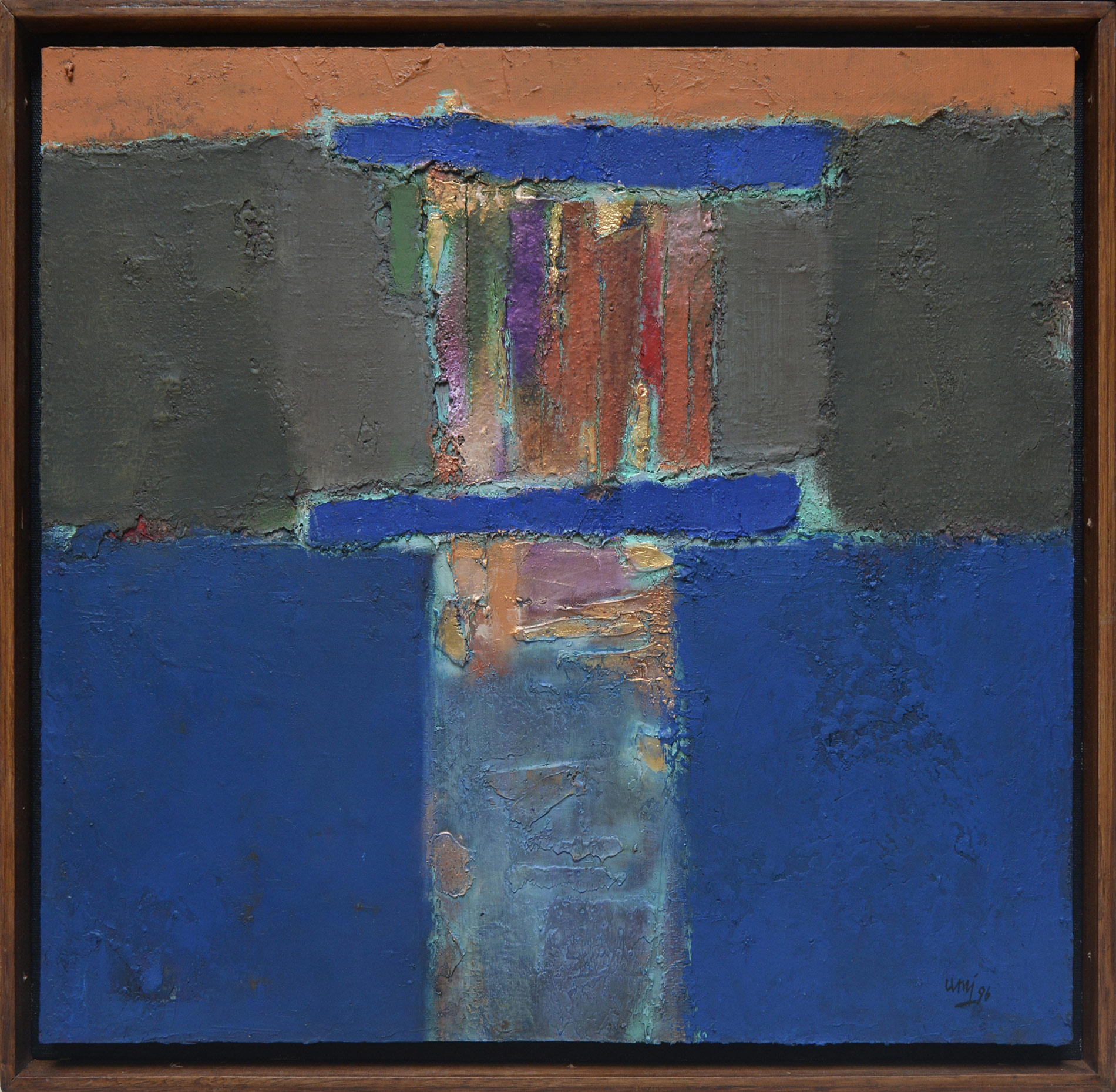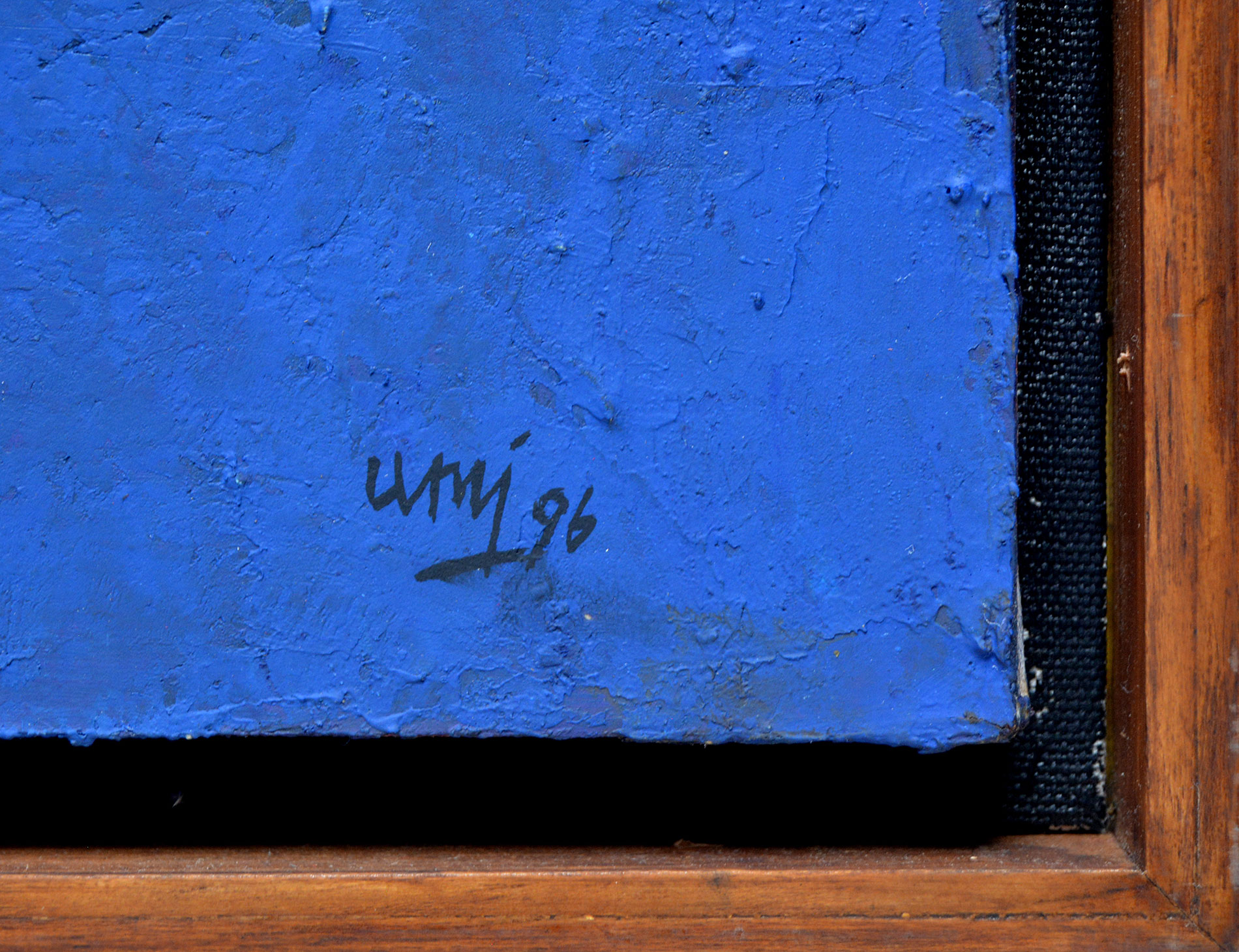LOT 918
Umi Dachlan
(1942 - 2009, Indonesian)
Simfoni Abstraksi
painted in 1996
mixed media on canvas
60 x 50 cm
signed and dated on lower right
S$ 2,300 - 3,300
US$ 1,805 - 2,590
Condition Report
The painting is in good condition. The canvas is in plane, free of deformations and under adequate tension. Paint layers are intact and in stable condition. No retouching was detected under UV light examination. The painting is offered with frame.
Please note that this report has been compiled by Larasati staff based solely on their observation on the work. Larasati specialists are not professional conservators; thus the report should be treated only as an expression of opinion and not as a statement of fact. We suggest that you consult your own restorer for a more thorough report. We remind you again that all work is sold 'as is' and should be viewed personally by you or your professional adviser before the sale to assess its condition.
IMPORTANT NOTICE :
Kindly note that the Auctioneer will conduct the auction LIVE in the Sale Room. To comply with venue's Health Regulations, bidders are encouraged to register for phone bidding or putting absentee/written bid. You can also register to participate live on www.invaluable.com. Bidding will be carried out in Singapore Dollars. Any other currencies shown is just for reference only.
FOR THIS PARTICULAR SALE, ONE LARASATI ARTS WILL NOT CHARGE AN ADDITIONAL ON-LINE COMMISSION. PREMIUM IS 22% ON FINAL HAMMER PRICE.
How To Bid
Absentee or Telephone Bid
To submit an Absentee Bid or Telephone Bid, please complete this form and submit to info@larasati.com.
Online Bidding
To bid via Live Online Bidding please register on:
INVALUABLE:
https://s.id/LRSTJUL2025
Bidding will be carried out in Singapore Dollars.
Any other currencies shown is just for reference only.




